
Untangling the impossible: How ESB cuts through the Gordian knot of system communication.
Running a manufacturing company is quite a challenge. It consists of a huge variety of processes which are usually very complex. Management of a company includes, for example, management of its resources, supply chain, human resources, finance, workflow, production, roles and responsibilities of individual employees, risk, change, technology, etc. Preparation of strategies, plans and schedules, demand forecasting and many other areas must also be taken into account. Such a multitude of tasks makes it impossible to cope with them without the help of specialized tools in the form of dedicated IT systems. There can be quite a lot of these systems too. How to control them and combine them into a single, smoothly functioning organism?
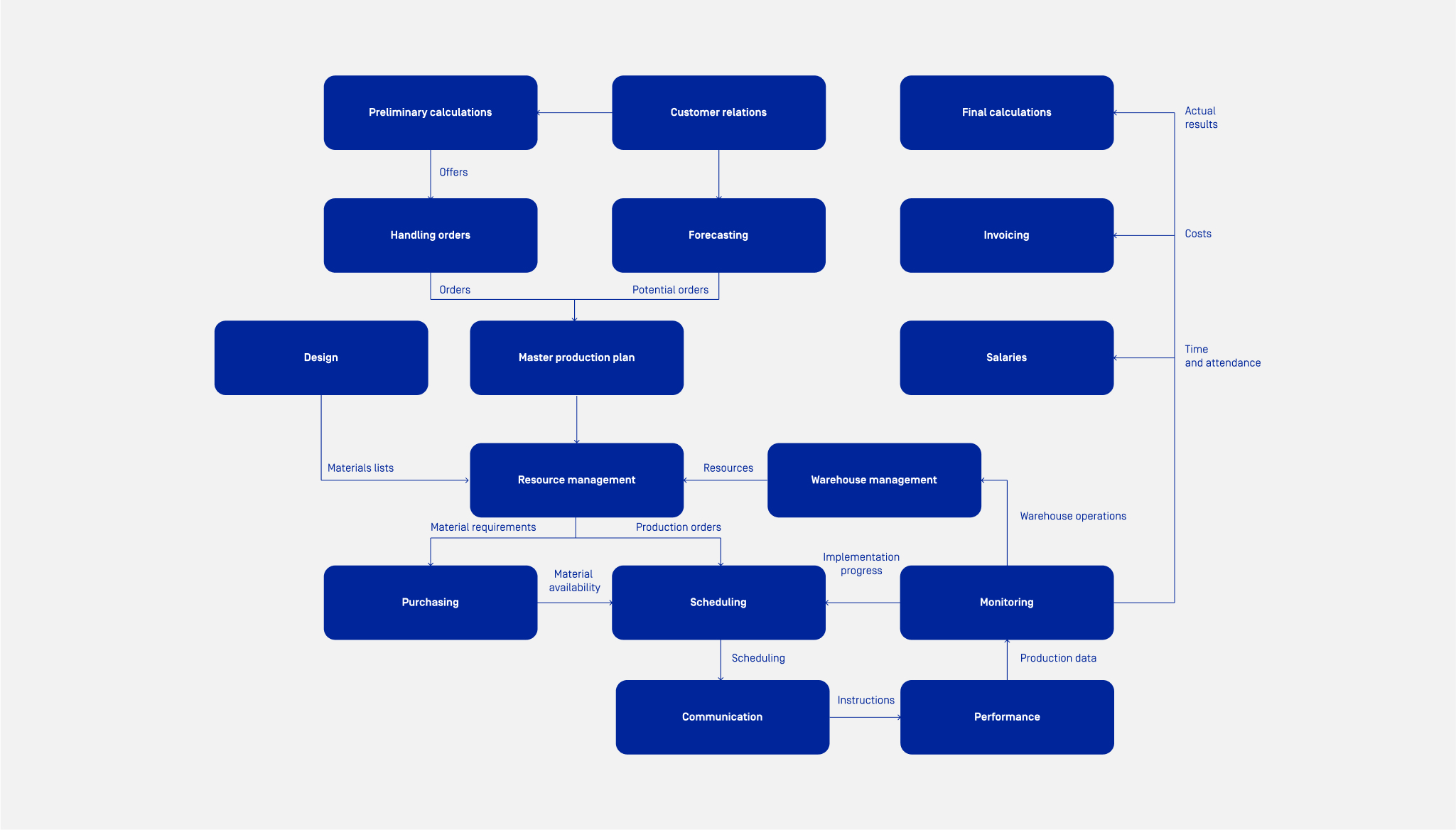
One system to cope with the management of all areas in a manufacturing company is the dream of many entrepreneurs. Probably it will remain in the realm of dreams, because we know very well that “if something is for everything, it is for nothing”. The times when one software supported all business processes are gone irrevocably. Although there are times when ERP manufacturers try to convince us that their software will provide us with everything we need, experience shows that, unfortunately, this is just an advertising gimmick, not reality.
Nowadays, these processes, tasks and areas are already too complex and too many aspects need to be included. Therefore, in order to adequately respond to the needs, professional and dedicated systems are required, where each is specialized in a different area – for example, MES allows real-time control of production processes, WMS supports warehouse operations, APS allows the best planning of resources, etc.
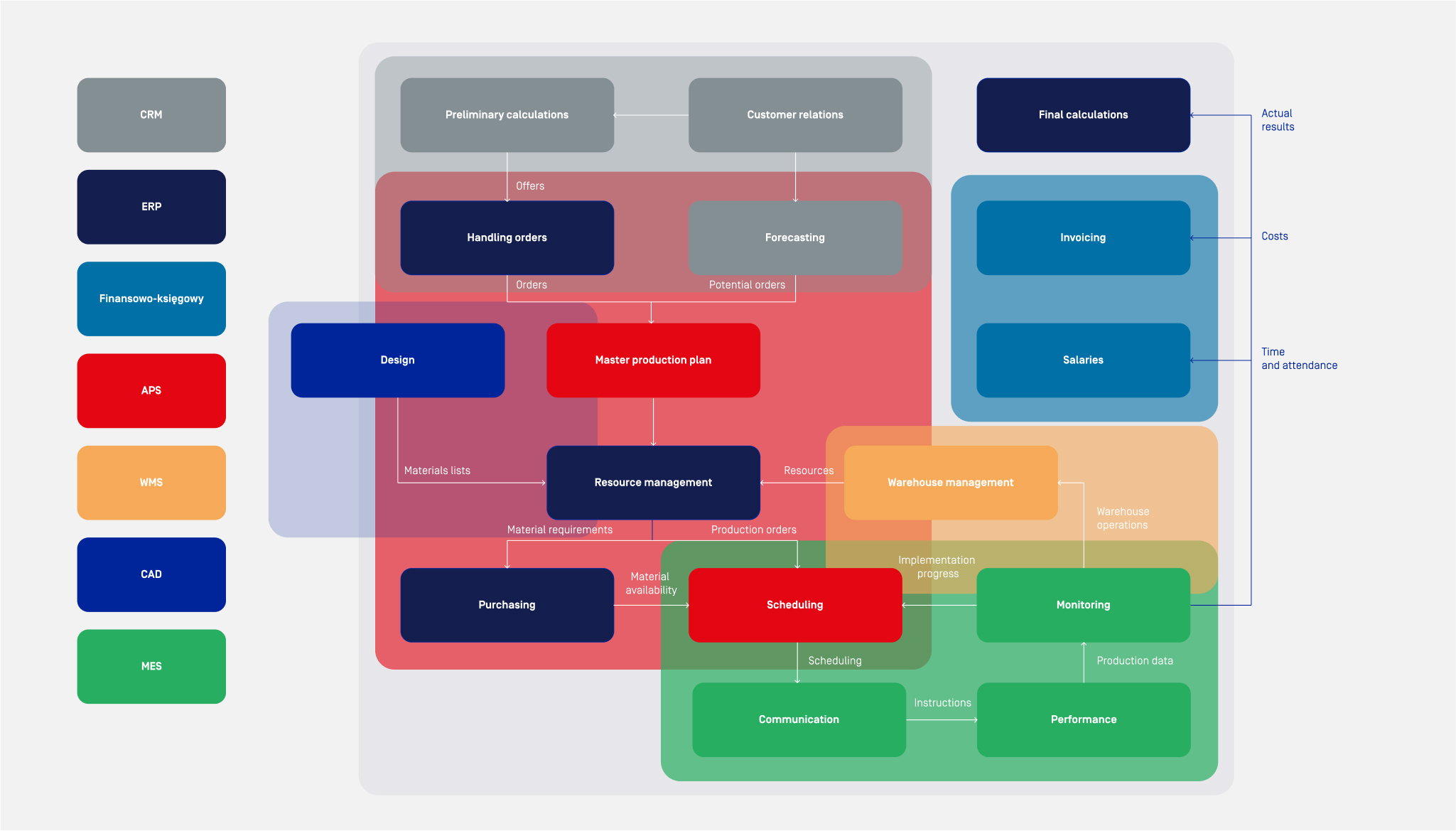
However, the various areas in the company do not operate in isolation from each other. On the contrary, they interconnect and intermingle on many levels. That is why the integration of all systems operating in the company is such an important aspect. They should be able to efficiently exchange information and complement each other.
Integration is the key to the smooth operation of the entire enterprise – to its efficiency and the consistency of all processes. At the same time, it is quite a challenge. Often the only possible solution seems to be to create a network of connections between the databases of individual systems. Sounds simple? Unfortunately, in practice it is not so simple at all.
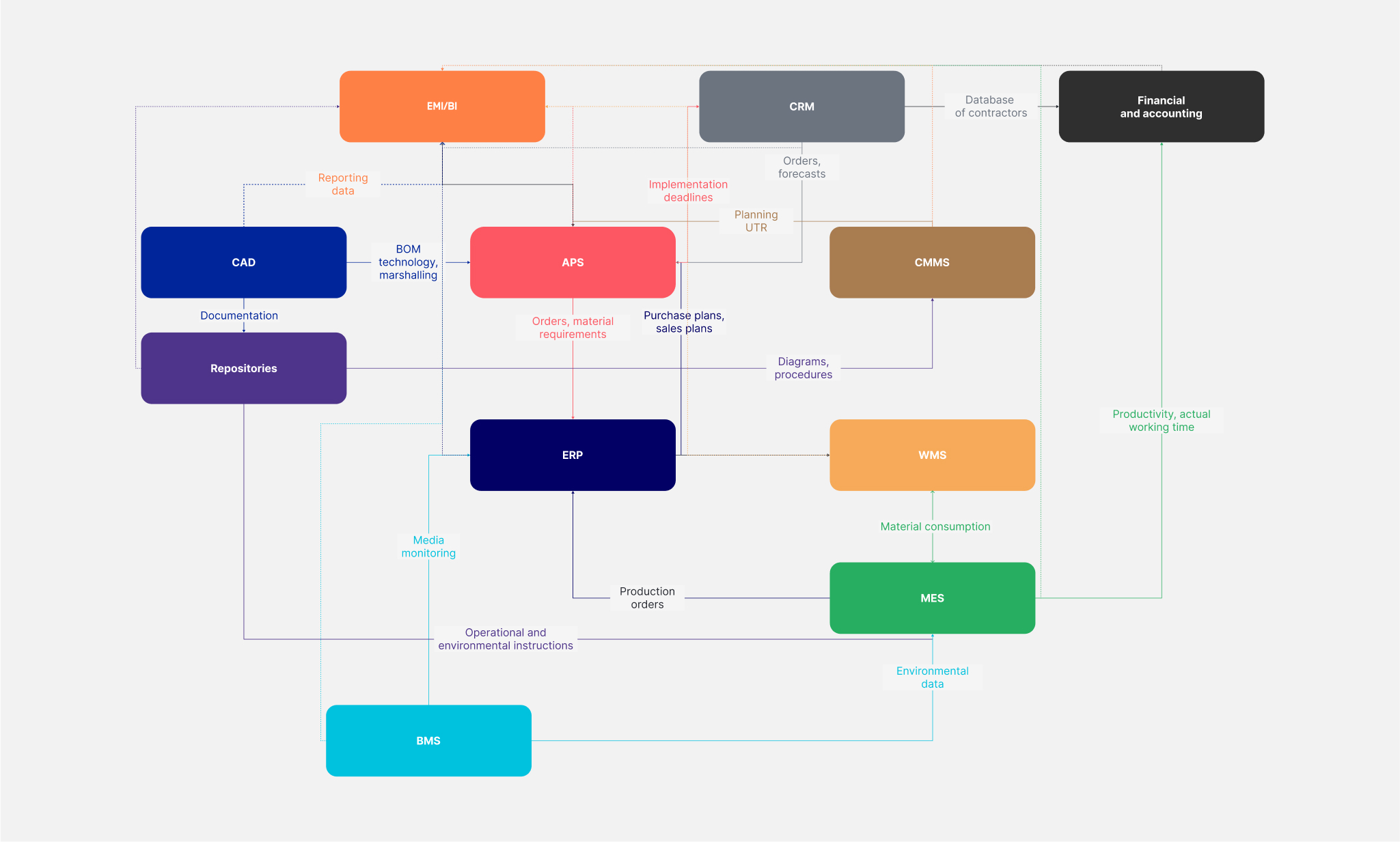
Each new database to be attached to such a network forces the creation of further links. In addition to this, the transmitted data must be properly processed to comply with the requirements of the systems that receive it. There’s also the fact that often one-way sending of data, without feedback, is not enough.
The result? A huge number of complex, intricate links, each of which must be controlled and updated whenever changes occur in one of the systems or a new one joins. This is not only impractical, but also expensive and time-consuming to operate.
The answer to the integration problems described above may be an ESB (Enterprise Service Bus), in other words data bus. This is software that acts as a middleware platform, so called “middleware,” and acts as an intermediary between the various systems running in an enterprise, allowing them to exchange data easily and seamlessly. It allows applications to use the services of other applications, without the need to create direct connections between them.
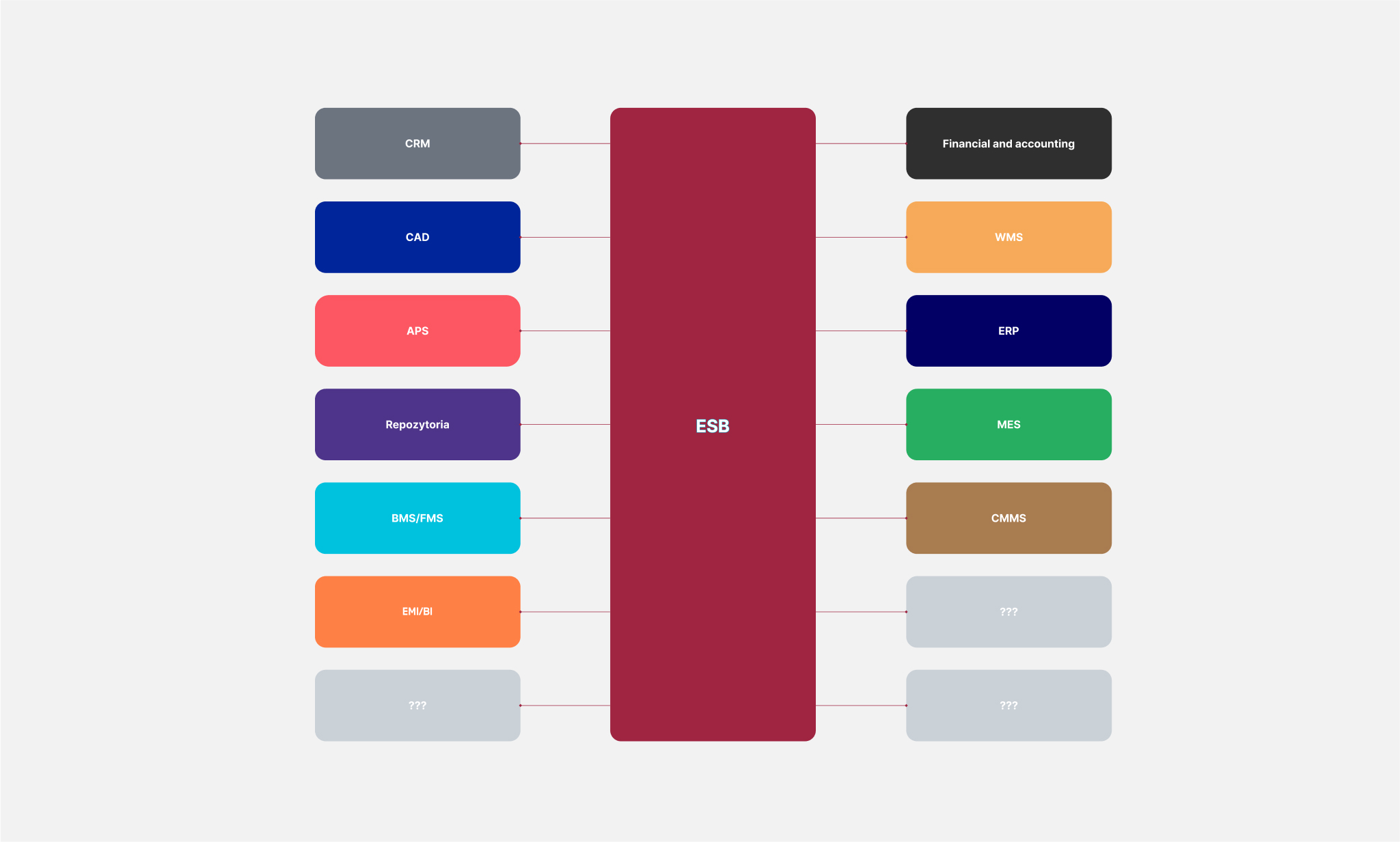
The ESB can process huge amounts of data, regardless of their formats and a variety of communication protocols. Its main task is to transform messages so that they can be understood by the recipient (i.e., another system) and direct them so that they go where they are needed.
The ESB works by mediating and managing communication between applications in a hub-and-spoke model. This means that each application is connected to a central bus. This creates a data exchange point that allows systems to exchange information in real time and provides all applications with access to the same data without having to connect them directly to each other.
Data buses are scalable solutions that grow with along with the company. They help reduce the chaos associated with a large number of connections between different systems. All data generated in a company’s IT structure passes through an ESB, allowing it to be centrally managed. You can also easily add new applications to a functioning IT infrastructure, without having to transform the connections already in place. In fact, to simplify things, one could even say that adding a new system comes down to merely communicating it with the data bus.
The two key functionalities of the ESB are translation and transformation. These are what allow the data bus to fulfill its main task, which is to integrate distributed systems in an enterprise.
Translation is literally “translating” the format of the message on the input to the format expected on the output. For example, a machine saves its event log as a .csv file. When the same log wants to be stored in a database for AuditTrail we perform a conversion to SQL and make database entries.
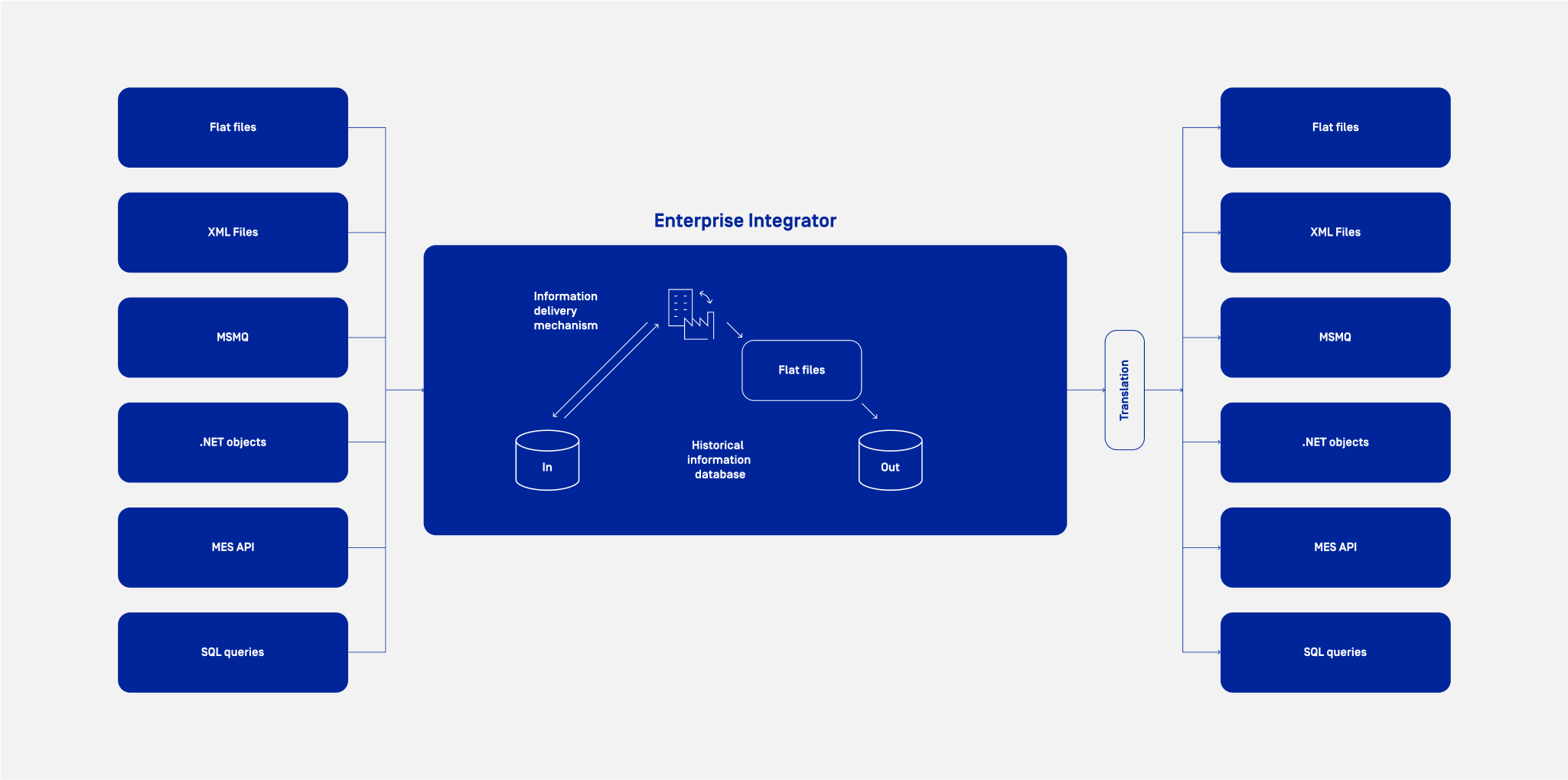
Transformation is the conversion of an input message and its distribution to different recipients who need it in a given context or use only selected specific elements of it. For example, production revenue data coming from MES system is distributed to several systems, each of which uses it for different purposes: ERP for accounting purposes, WMS for warehouse operations, and APS for determining the progress of an order and estimating its completion time.
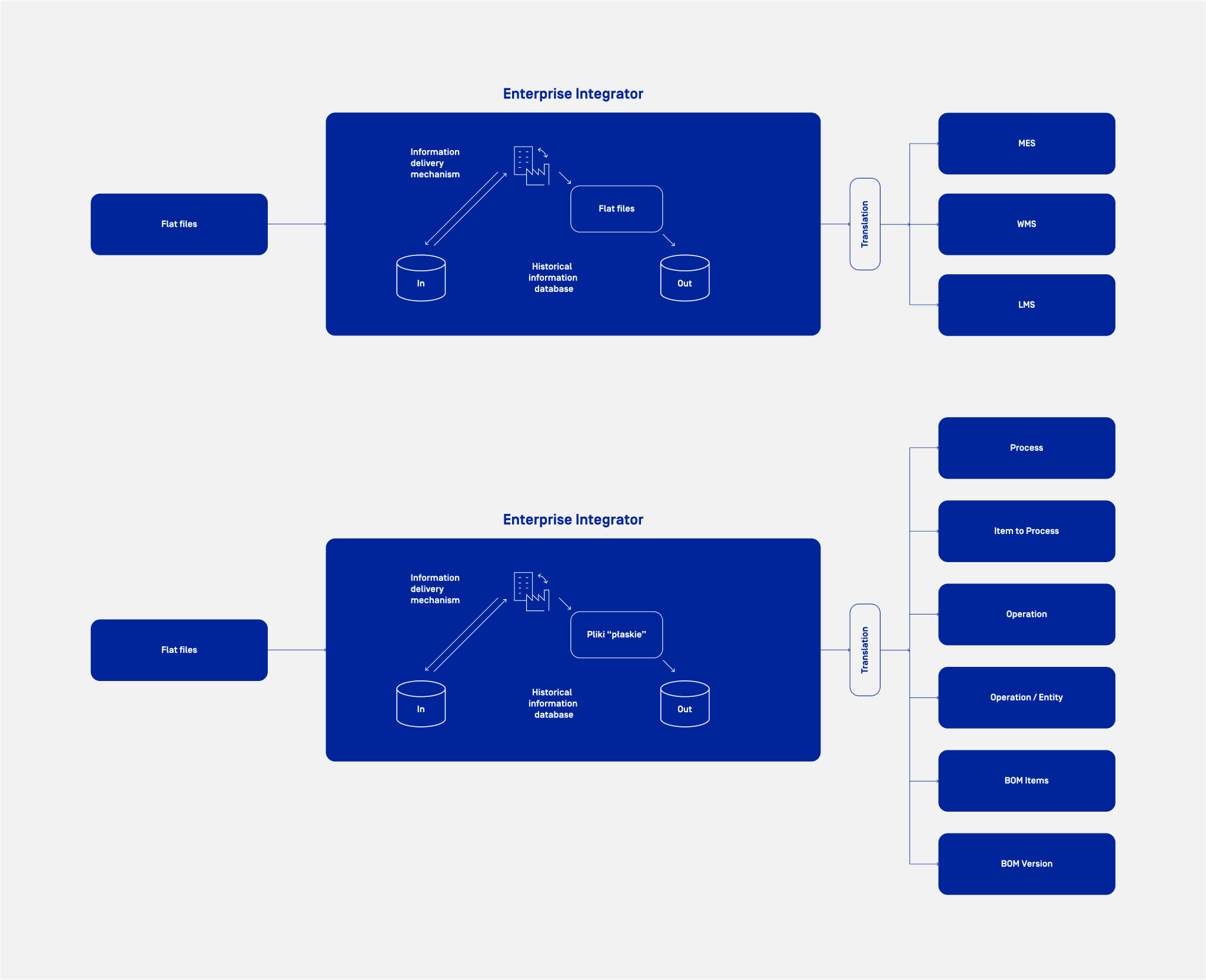
Transformation can also be used to break up one large message into several smaller ones to be used for specific purposes by a single recipient. For example, a production order downloaded from an ERP system can be broken down into BOM, routing, production operations, etc., and then stored in the appropriate places in the MES system.
In practice, most often both translation and transformation are used simultaneously.
ESB is often identified with ETL, or Extract, Transform and Load. Although both solutions are related to data processing and integration, and in some cases can be used interchangeably, it is worth being aware of the differences between them.
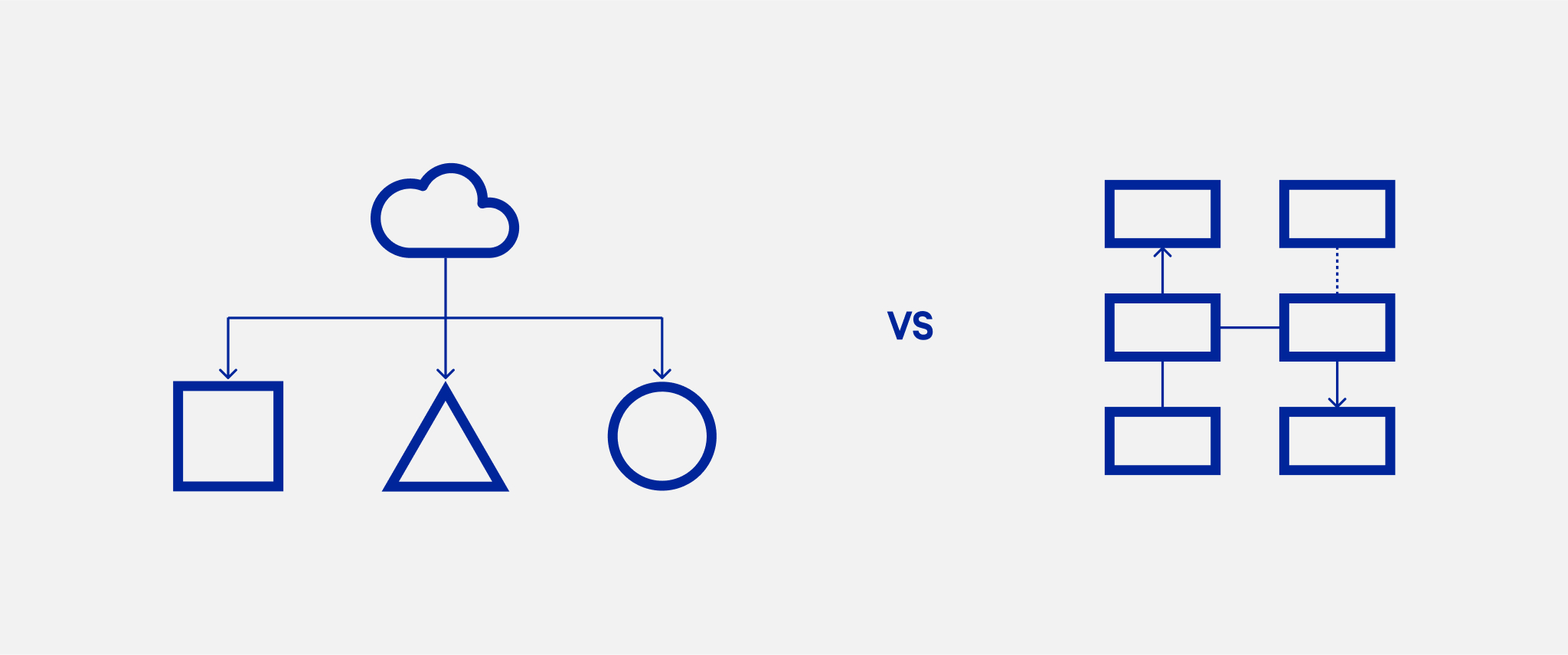
ETL is an autonomous system that works independently of other solutions. It was created as a tool for retrieving data on demand or cyclically in large packets.
It is a tool typical of data warehouses. It is used to retrieve, transform and load the collected data into a data warehouse. This information is most often used later for analysis and reports. Examples of ETL applications include mass data migration operations such as downloading master data or preparing data for staging databases.
ESB runs continuously, and is designed to support real-time processes. It works best in SOA (Service-Oriented Architecture) environments, where the various elements of a solution ecosystem communicate with each other using defined interfaces over a network. Although the ESB runs as a separate application, it is an intermediary layer that connects different systems and applications and is thus dependent on them.
The ETL operates in “pull” mode, meaning that at the request of a user or according to a set schedule, it connects to a data source, retrieves the data, transforms it and loads it to a designated location. The default mode of operation for the ESB is “push,” meaning that the source system feeds data to the bus using an API, for example, achieving real-time integration. In most ESB class solutions the “pull” mode is also available.
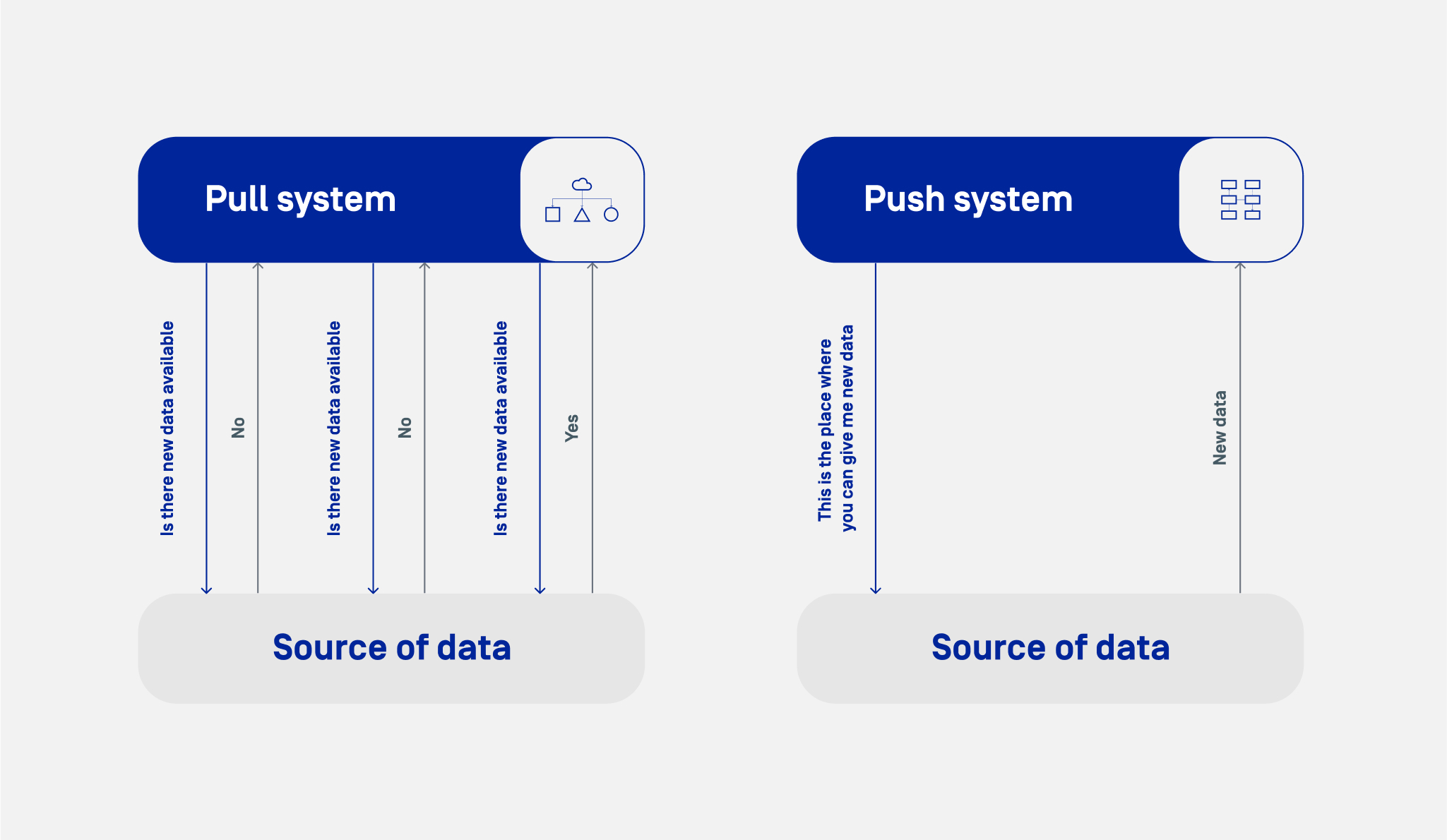
Both systems are scalable solutions and are capable of processing large amounts of data. Moreover, most data buses have built-in ETL functionality, so they can successfully replace them. However, one should be aware that too large data packets can reduce the bus’ throughput. It then becomes less efficient and ceases to serve its purpose, which is real-time integration.
ESB is a real-time systems integration solution, while ETL is used to process data for historical analysis.
Implementing an ESB can bring a number of benefits to organizations, such as:
Simplification of IT architecture – thanks to centralized communication between applications running in the company, the number of point-to-point connections is significantly reduced.
Adaptation to changing needs – ESB is a scalable system that adapts to the growing needs of the company. What’s more, it facilitates the replacement of systems operating in the company, without the need to disturb the entire IT infrastructure.
Flexibility – the data bus makes it possible to integrate the widest variety of systems, from ERP or MES systems, to sales systems, warehouse systems, as well as external systems such as those of courier or shipping companies.
Time and cost savings – using ESB reduces the need to build and later maintain individual connections between different systems, which saves time and reduces costs.
Security – ESB provides fully secure data storage through encryption and authorization mechanisms. An additional plus is automatic error detection and repair.
Reliable data – integration of systems eliminates the need for manual data entry, thus reducing the risk of errors and allowing better use of available resources.
More efficient management – centralized data gives greater ability to manage its flow and comprehensive analysis. As a result, managers can better control processes, respond faster to current needs and make more favorable decisions.
In summary, the benefits of implementing a data bus are indeed many. ESB is undoubtedly an important part of a modern IT structure in manufacturing companies. It will bring the more benefits, the more systems operate in a given organization, operating on the basis of different protocols and data conversion rules. It’s a solution that makes even very complex structures simple and transparent, while retaining all the benefits of connected applications.
However, it is important to remember, that while the data bus helps to simplify things, it is by no means simple itself – it is not enough to simply run it and connect systems to it for the integration to work right away. You need to think properly about such issues as the format of communication, its frequency, triggers and many other issues. The basis here is certainly a good knowledge of the specifics of the systems being integrated via the ESB with each other. On the other hand, the plus is that the ESB’s design allows integration to be implemented in stages, which makes the process itself much easier and reduces risk.
By unifying integration patterns, ESB-class systems significantly streamline daily operations, simplify data management, and allow rapid adaptation to changing needs. This is extremely important in the competitive world of industry. Moreover, it is also important, that the resources invested in the implementation of a data bus, both in terms of time and money, pay off very quickly.
Interested in implementing ESB in your company? Make an appointment for a free consultation and talk to our experts.

Michał Zieliński is a graduate in Automatic Control and Robotics, as well as a postgraduate Lean Six Sigma Black Belt from Gdansk University of Technology. He is a partner at ImFactory, where he works as a Project Manager and Head of the Digital Consulting Department. At ImFactory, he is involved in shaping a vision for the advancement of IT systems in manufacturing environments, evaluating the digital maturity of enterprises, and planning their Digital Transformation journey. His projects encompass a wide range of activities, from overseeing surveillance and monitoring installations to implementing comprehensive integrated manufacturing management systems.
See also
Want to learn more? Visit our Knowledge Base, where you'll find articles and webinars by experts to expand your knowledge.
Check if Digital Transformation is the Answer to Your Company's Needs


































